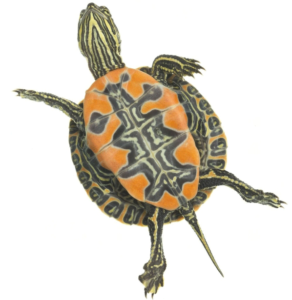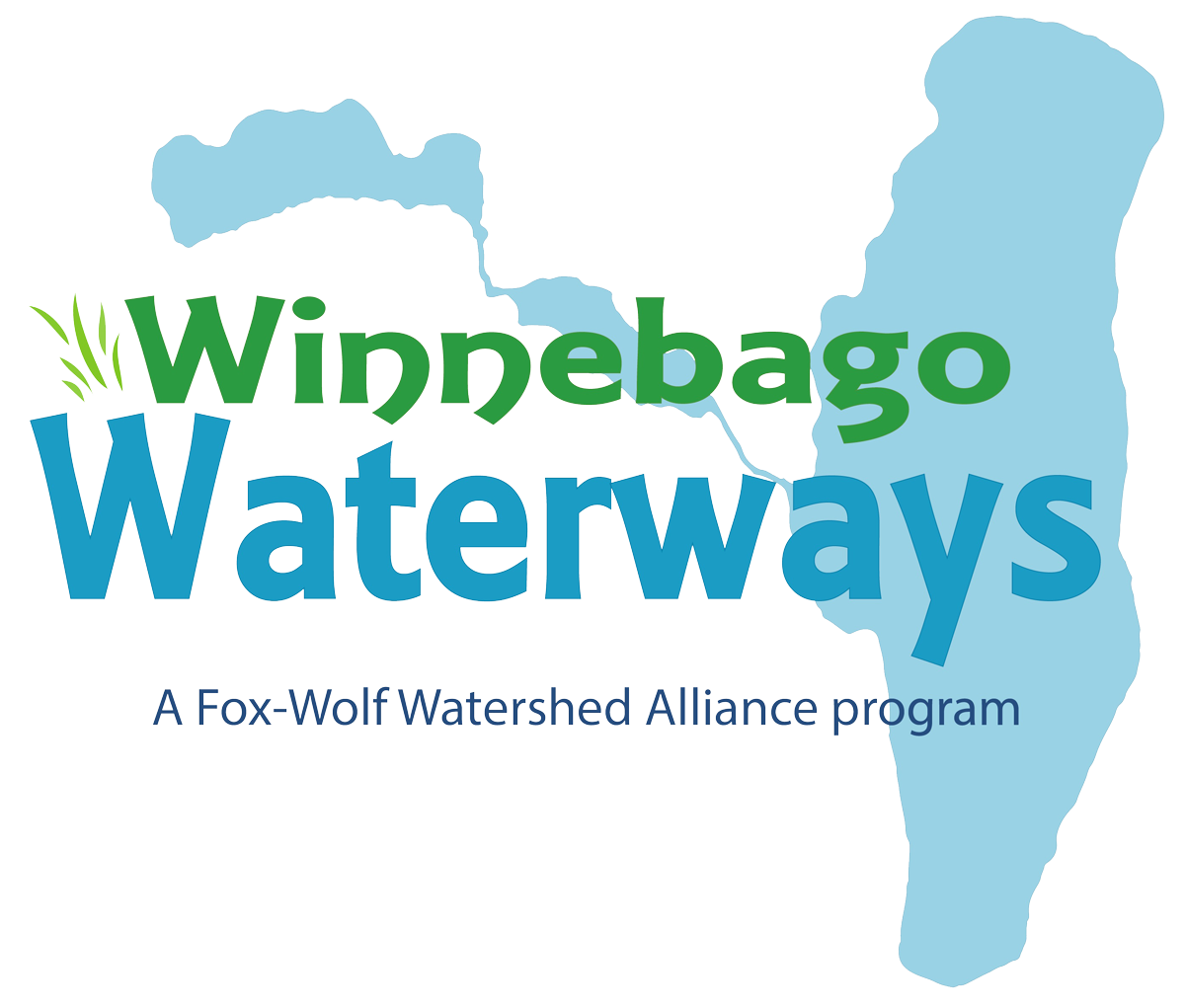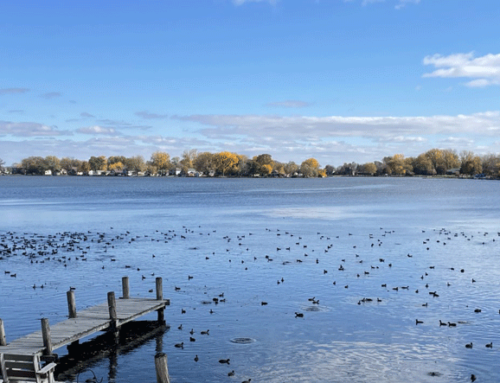
Painted Turtle on Log - Reuven Martin CC0

Many Painted Turtles on Log - Braden Judson CC0
As temperatures warm, start keeping an eye out for the beautiful painted turtle (Chrysemys picta), this month’s species spotlight. The painted turtle is the most common and widespread turtle in North America and Wisconsin’s most common turtle species. They can be found in marshes, lakes, ponds, rivers, and streams. If you encounter a turtle in the wild, it is best to leave it alone.
The painted turtles are particularly adapted to Wisconsin’s cold winter: they can survive subfreezing temperatures because their blood can remain supercooled, and their skin resists penetration by ice crystals! Painted turtles hibernate in the winter usually by burying themselves, sometimes underwater. There are two sub-species of painted turtle in Wisconsin: Western and Midland. The Western subspecies is the most common in the Winnebago region of the state. The painted turtle can be identified by its yellow face markings and colored pattern on the underbelly. The Western painted turtle has a distinct bright red/orange underbelly. In Wisconsin, painted turtles typically grow up to 10 inches. The scales that make up a turtle’s shell are called “scutes”. Since painted turtles are reptiles, they are coldblooded. This is why you are likely to see them basking (sunning themselves) on logs and rocks!

Underbelly of Painted Turtle - Sam Stukel USFWS
Painted turtles eat a variety of foods, including aquatic plants, small fish, crustaceans, and aquatic invertebrates like dragonfly larvae. Painted turtles do not have teeth, instead their jaw has tough plates for gripping and crushing food. They sleep below the water, usually at bottom of waterbodies like the Winnebago Pool Lakes. Painted turtles mate in the spring and fall in water, and females next in late May – mid-July, near bodies of water. If you see a painted turtle out of the water, it may be a female looking for a nesting site. It is best to leave it alone.
Eggs take about 80 days to hatch, usually in August or September. Painted turtle hatchlings can spend the winter in their nest before emerging the following spring. The eggs and hatchlings can be preyed on by raccoons, badgers, skunks, foxes, opossums and more. Painted turtles grow very quickly during the first few years of their lives, and can double in size during their first year! Male painted turtles mature at 3-5 years old while females mature at 6-10 years.
The best way to help protect Wisconsin’s turtle species is to observe it in its natural setting, then leave it where you found it. Protecting their habitat is also very important. Since the painted turtle is highly dependent on water, especially waters that can support aquatic vegetation to eat, protecting and restoring our waterways will help support turtle populations.
Sources:
Featured Image: Western Painted Turtles – Erin Springinotic – CC0
Written by Katie Reed, Winnebago Waterways Program Coordinator – katherine@fwwa.org or 920-851-6472
Winnebago Waterways is a Fox-Wolf Watershed Alliance recovery initiative. Contact us at wwinfo@fwwa.org








